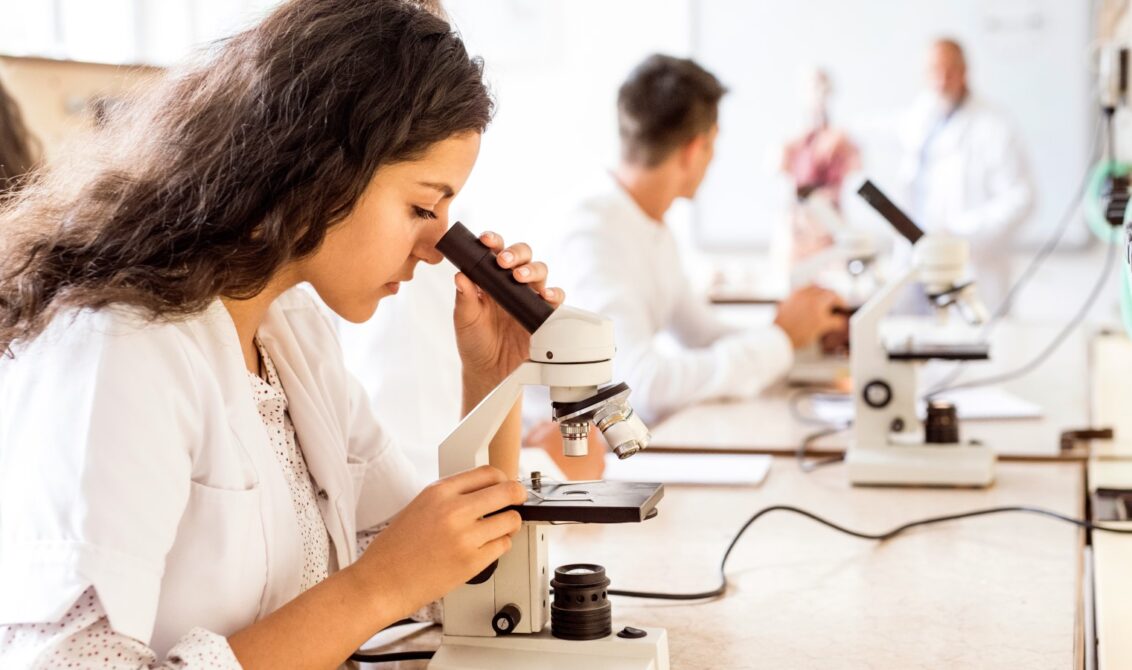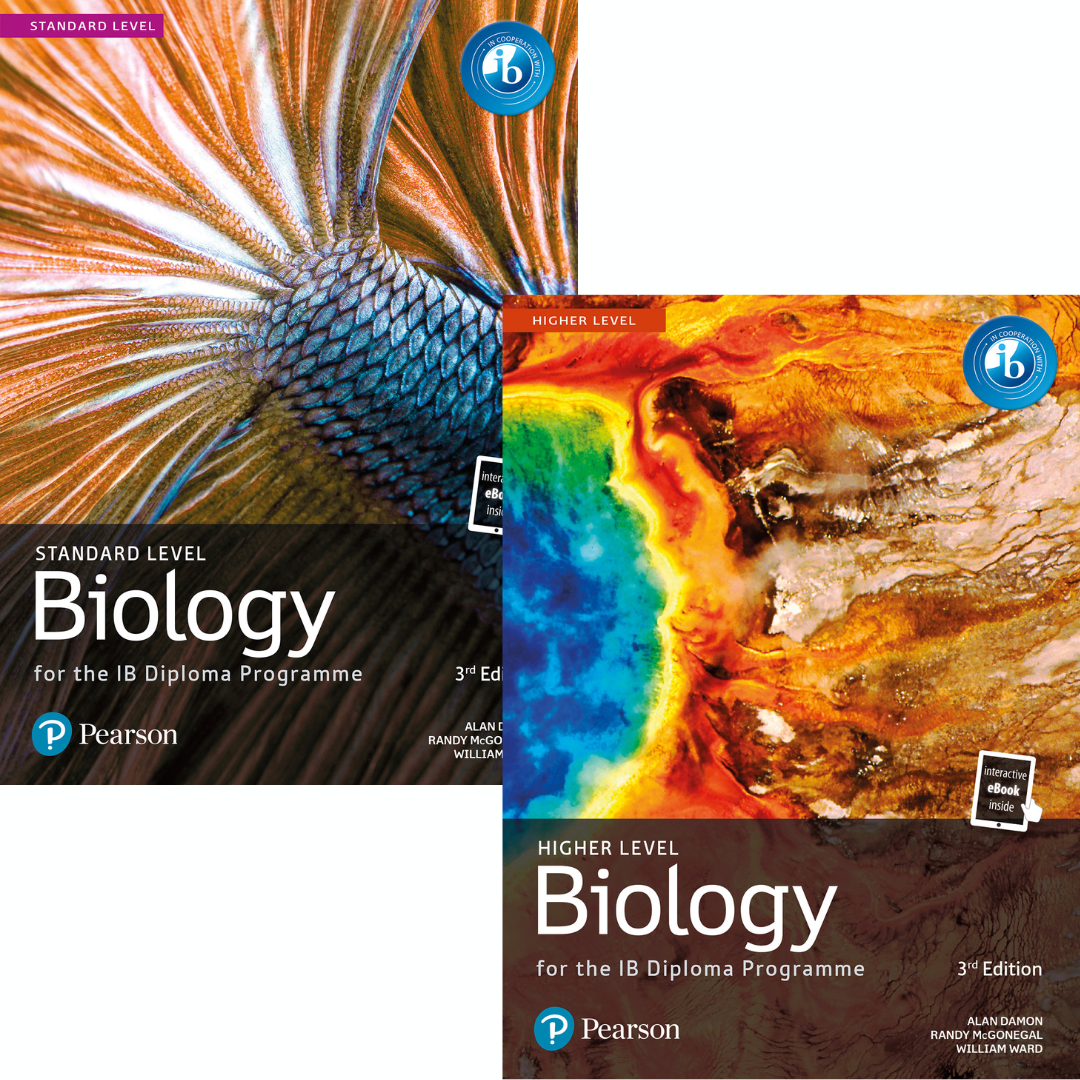
Following on from Catrin Brown’s blog post about the changes to the IB DP chemistry subject guide, Randy McGonegal, one of the authors of Pearson’s Biology for the IB Diploma Programme series talks about what the changes mean for biology.
As stated in the new biology subject guide, the aim of the syllabus is to integrate concepts, topic content and the Nature of Science through inquiry. Changes have been made in order to reduce the content of the course. The more significant changes in the new biology guide are itemised here.
1. Removal of the Options
The removal of the Options is a main contributor to the reduction in the content of the course. However, teachers will note that some topics from each of the former Options are now included in the main syllabus. Content has been reduced in many other areas too, hopefully leaving students more time to reflect and integrate needed concepts.
A few examples of previous Option material that is now included in the main syllabus are as follows:
- community structure and changes in community structure of ecosystems
- recognition of self vs. not-self as the basis of the immune system
- the role of skeleton and muscle in support and movement
- transport of respiratory gases within the blood
This syllabus contains fewer specified examples of context than the 2016 syllabus, so that teachers should feel less constrained and more able to choose examples that suit their location and circumstance.
2. Introduction of four main themes
In order to enhance conceptual learning, the syllabus content is now presented in four main themes:
- Unity and diversity
- Form and function
- Interaction and interdependence
- and Continuity and change.
In addition, the syllabus structure now includes four levels of organisation:
- Molecules
- Cells
- Organisms
- and Ecosystems.
There is no expectation that the syllabus be taught in any particular order of themes or levels of organisation, or that any topic needs to be covered completely at one time. Topics are often addressed in several different themes and levels of organisation. For example, a teacher may choose to follow the order of topics as given in the Guide or pick and choose topics and tick them off as they are accomplished. The Pearson Biology for the IB Diploma Programme series covers topics as laid out in the Guide to ensure flexibility for individual schools.
The Nature of Science (NOS) continues to be an important thread that runs through the course (and through the chemistry and physics courses too). Some references are made to NOS in the syllabus, but mostly, teachers are encouraged to provide their own examples, including drawing on topical developments.
3. Guiding Questions
Guiding Questions are a new feature of the syllabus, given at the start of each sub-topic. The questions are purposefully open-ended, lending themselves to increasingly detailed consideration as the understanding of the topic deepens. These questions may serve as openers for a topic, teasing out students’ prior knowledge, and perhaps helping to suggest a sequence of what will be covered. They could also be used as a tool for assessment, looking for increasing depth and breadth at different stages in the learning.
Guiding Questions should be re-visited at the end of each sub-topic as a useful tool for revision.
4. Linking Questions
Linking Questions are another important feature of the new course. They are given in many of the syllabus Understandings, where they show a link to a different but related sub-topic. The goal of Linking Questions is to help create enhanced understanding. The content of Linking Questions is often addressed elsewhere in the text as it sometimes encourages a ‘revisiting’ of material and sometimes a preview of upcoming material.
Linking Questions are unlikely to be used as questions in examinations per se, but the related concepts are considered an essential part of the course.
5. Introduction of skills in the study of biology
The 2025 subject guide includes a section known as ‘Skills in the study of biology’. This is not intended as a topic to be taught in isolation, but is more of a checklist of skills that students must acquire during the course. It replaces the ‘prescribed practicals’, (aka ‘mandatory labs’) of the 2016 curriculum, and clarifies the techniques, technology and mathematical scope that is expected within the course. This approach gives more flexibility to teachers as to how and when they teach a specific skill.
Subcomponents of the ‘Skills in the study of biology’ are tables providing ‘Tools’ that can be used as a checklist to introduce and reinforce specific skills and techniques during the lab program. These tools include Experimental techniques, technology, and mathematics. At first glance, the list may seem daunting, but it also provides ideas that teachers may have never considered.
Lastly, the inquiry process is explicitly laid out as essential background for the Internal Assessment component of the course with sections on Exploring and designing, Collecting and processing data, and Concluding and evaluating data. Be sure to access and make use of this information in the Guide when designing your course.
The other authors (Alan Damon and William Ward) and I hope that your new journey into the teaching of the biological sciences is an enjoyable and rewarding one.
 Start your free trial
Start your free trial
Explore our complete course books for Standard Level and Higher Level Biology to see for yourself how they fully support you with delivering the new Subject Guides. Sign up for a free trial
Subscribe to our blog
If you’d like to stay up to date with our articles in 2023, why not subscribe to our blog? You’ll get a fortnightly roundup of the articles you’ve missed straight to your inbox, plus links to free teaching resources.

